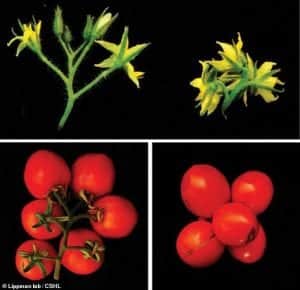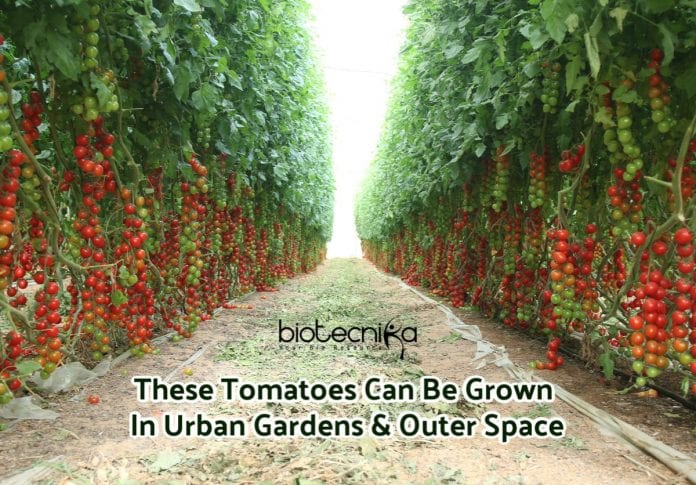New CRISPR Urban Tomatoes
New CRISPR Urban Tomato plants whose fruit grows in compact bunches like grapes has been developed by researchers from New York’s Cold Spring Harbor Laboratory.
Prof. Zach Lippman, Cold Spring Harbor Laboratory Professor, and HHMI Investigator said that the primary goal of this new research is to engineer a wider variety of crops that can be grown in urban environments or other places not suitable for plant growth.
The New CRISPR Urban Tomato plants’ most notable feature is its bunched, compact fruit, which resembles a bouquet of roses whose flowers have been replaced by ripe cherry tomatoes. They also mature quickly, producing ripe fruit that’s ready for harvest in under 40 days. And you can eat them.

Prof. Lippman added that the tomatoes taste great and have great shape and size.
Most importantly, they’re eco-friendly. That’s good news for anyone concerned about climate change.
These New CRISPR Urban Tomatoes would reduce the usage of harmful fertilizers that have an adverse effect on the environment. It would also help in the reduction of global carbon footprints, claims scientists.
Earlier this year, the UN Intergovernmental Panel on Climate Change (IPCC) warned that more than 500 million people are living on land already degraded by deforestation, changing weather patterns, and overuse of viable cropland. By shifting some of the burdens of growing the world’s crops to urban and other areas, there’s hope that desperate land mismanagement will slow.
A significant advantage of the urban farm includes year-round in climate-controlled conditions, reduced space required for cultivation among other benefits. That’s why it’s beneficial to use plants that can be grown and harvested quickly. More harvests per year result in more food, even if the space used is very small.
The team created the New CRISPR Urban Tomatoes by fine-tuning two genes referred to as the Self Pruning (SP) & SP5G genes which control when the plant stops growing and when it flowers and fruits.
Past research has shown that tinkering with these genes can unintentionally lead to small yields and the tomatoes having a bad flavor. Therefore, the researchers had to be careful to ‘tune’ the plant’s genome just right.
Searching for a third player, Lippman’s team recently discovered the gene SIER, which controls the lengths of stems. Mutating SIER with the CRISPR gene-editing tool and combining it with the mutations in the other two flowering genes created shorter stems and extremely compact plants.
By making crops and harvests shorter, Professor Lippman believes that agriculture can reach new heights.
Prof. Lippman highlighted that NASA Scientists have expressed their interest in the New CRISPR Urban Tomatoes.






























